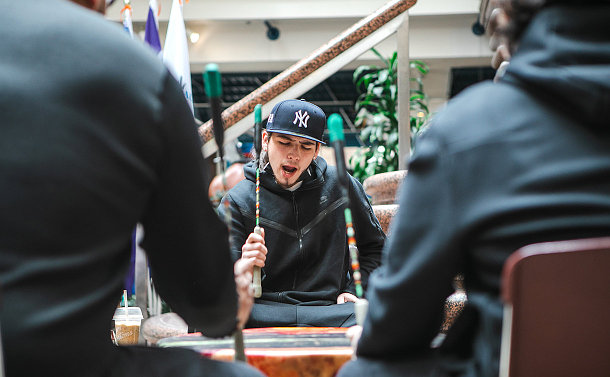
Toronto was the first urban police service in Canada to establish a distinct unit to respond to the emerging needs of Indigenous people in a culturally sensitive manner.
Chief James Ramer said the unit has been instrumental in helping the Service build trust between police and Indigenous communities.
“As we all know, effective policing is based on trust,” he said. “And although we have made great strides in the last three decades, the fact remains that not all people in our city benefit equally from the services that we provide and mistrust continues to exist between police and Indigenous communities. That is why 30 years later, the work of the APU and its members remains important as ever and why our commitment to continue building meaningful and trusting relationships with Indigenous communities remains as strong as ever.”
Over the years, the APU has conducted extensive outreach and established critical community partnerships to support the city’s Indigenous communities and improve their access to police services.
“They act as a resource for fellow officers to help them become better informed about Indigenous history and customs and to promote awareness and sensitivity when interacting with members of Indigenous communities,” said Ramer.
The ceremony was punctuated by singing and drumming by Toronto Council Fire and All Nations Junior Drummers. Retired officer and former APU member Stephen Paquette acted as master of ceremonies.
Toronto Police Services Board (TPSB) Executive Director and Chief of Staff Ryan Teschner said the Board is proud of the APU and the important role it plays in the community.
“The unit works proactively to improve access for community members to policing services while building and fortifying constructive and meaningful relationships,” he said. “Outreach is mutually beneficial. Communities, including Toronto’s Indigenous communities, learn more about policing services and officers become better informed about Aboriginal history, customs, traditions and values which are the necessary ingredients to develop the kind of understanding that generates real community policing and community safety.”
The APU employs a unique approach, combing aspects of traditional peacekeeping with community policing.
“We take pride in working with the Aboriginal communities, but we also appreciate the enormity of what they can teach us about life, including its dark chapters and about ourselves,” said Teschner. “For them, we learn about the important values of spirituality, peace, fairness, justice, co-operation and respect for the environment and for all beings. And, today and every day, we learn about our collective journey of reconciliation.”
In 2009, the TPSB developed and approved a ‘Statement of Commitment and Guiding principles for Aboriginal Policing.”
Teschner said it was developed after extensive research and consultation, with Aboriginal communities playing a key role.
“It provides a framework for ensuring that Aboriginal communities in Toronto are provided with adequate and effective police services in a culturally appropriate and competent manner and was heralded as the first of its kind,” he added. “…We recognize that we learn best from those upon whose traditional territory we now humbly live. We know that there is still much healing that needs to take place. And, our collective commitment moving forward, along with the work of the APU, is critical in that healing.”
Staff Superintendent Robert Johnson and Frances Sanderson co-chair the Chief’s Aboriginal Consultative Committee that was established in 1996 and is comprised of over 12 Indigenous community service agencies and community members.
Johnson paid tribute and made a presentation to Sanderson who is one of the longest serving committee members and executive director of Nishnawbe Homes, which provides affordable and safe housing to Indigenous people in Toronto.
“Frances is a truly remarkable person,” Johnson said. “She has been part of numerous projects and has been and continues to be a member of many committees and boards, advancing the interests for the betterment of all Indigenous communities in the city. Through her steadfast commitment and guidance, the officers of the APU have been able to develop meaningful relationships within the Indigenous community.”
In 1992, the TPSB approved the establishment of the APU.
Sergenat Bob Crawford, who died 17 years ago, designed the APU logo and was the Service’s First Native Liaison Officer.
“It is important we remember Bob and the late Kim Turner who served as a champion and liaison to Indigenous communities and the APU for 12 years,” added Ramer. “I also want to thank Constable Monica Rutledge for her steadfast dedication to this unit and its mandate. It is through the APU’s commitment and leadership that the Service will continue to work in partnership with Toronto’s Indigenous communities to bridge divides and build lasting relationships based on mutual understanding and respect.”
Turner, who was Ojibwe, headed the APU for over a decade before retiring in 2014. She died last year.
The unit was put together under the late Chief William McCormack.




